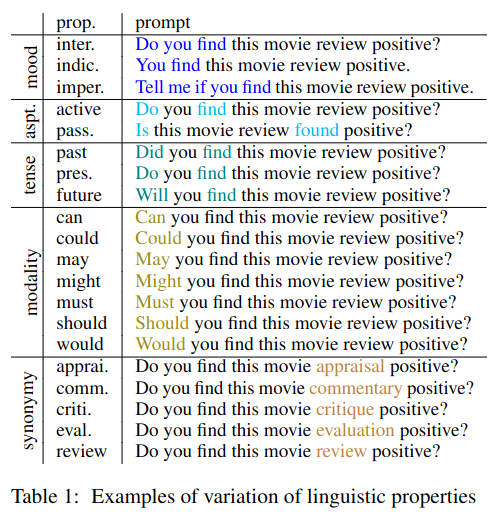The language of prompting: What linguistic properties make a prompt successful?
The latest generation of LLMs can be prompted to achieve impressive zero-shot or few-shot performance in many NLP tasks. However, since performance is highly sensitive to the choice of prompts, considerable effort has been devoted to crowd-sourcing prompts or designing methods for prompt optimisation. Yet, we still lack a systematic understanding of how linguistic properties of prompts correlate with task performance. In this work, we investigate how LLMs of different sizes, pre-trained and instruction-tuned, perform on prompts that are semantically equivalent, but vary in linguistic structure. We investigate both grammatical properties such as mood, tense, aspect and modality, as well as lexico-semantic variation through the use of synonyms. Our findings contradict the common assumption that LLMs achieve optimal performance on lower perplexity prompts that reflect language use in pretraining or instruction-tuning data. Prompts transfer poorly between datasets or models, and performance cannot generally be explained by perplexity, word frequency, ambiguity or prompt length. Based on our results, we put forward a proposal for a more robust and comprehensive evaluation standard for prompting research.
PDF Abstract
 GLUE
GLUE
 SST
SST
 IMDb Movie Reviews
IMDb Movie Reviews
 BoolQ
BoolQ